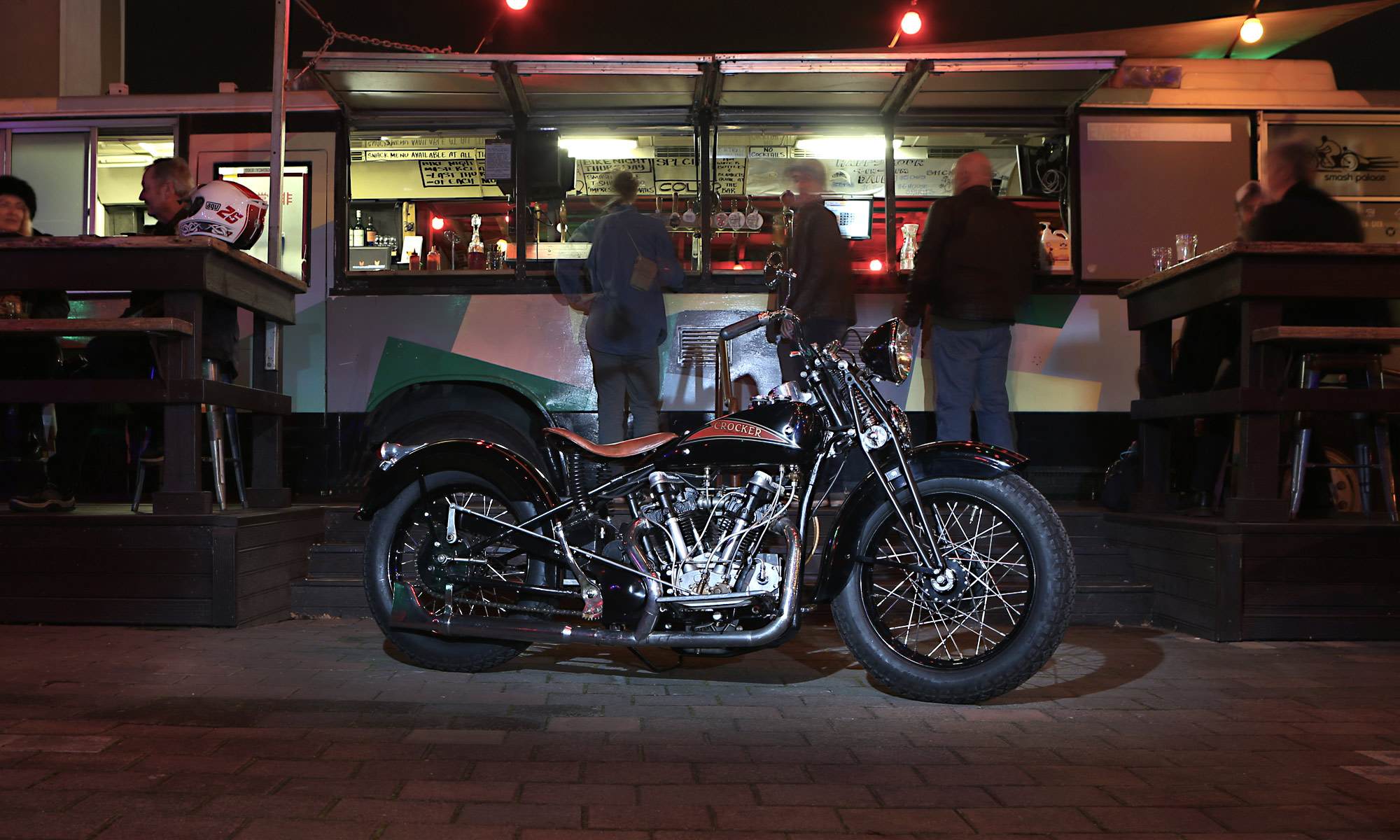
Riding our Crocker 386131
It’s a bright clear winter’s day in Christchurch; ideal for a jaunt on a motorcycle. Not just any motorcycle but the Collections 1938 Crocker, which Rob Selby from Auto Restorations has been mechanically restoring and refining for us. The cool temperature keeps oil viscosity at maximum as I give the 61 cubic inch V Twin 3 lusty primer kicks. Then turn the oil tap on (which also activates the magneto), timing at half retard, another half a dozen kicks and the bark from the exhaust keeps time with the jack hammers of nearby construction sites.
The non-self-return throttle makes it easy to keep to a smooth idle while helmet and winter gloves are donned; a quick visual check and we are ready to go. Clutch is set up to operate the same as a Harley using your heel to disengage gear lever pushed forward in the tank mounted gate a few revs and I am off. Cam overlap is requires a few more revs than a Harley for take-off but the less weight is quickly apparent. Through traffic is no concern with the clutch action and brakes proving at least equal to anything I’ve ridden of similar vintage.

I head out of Christchurch through the Lyttleton tunnel then a left turn to Governors Bay, the tight twisty roads being ideal for the Crocker’s handling characteristics. Balance is perfect, ground clearance ample and the frame feel solid. At Governors Bay it is a right turn to go over Dyers Pass. We do this super comfortably in second gear just so we don’t have to overtake too much traffic. Stop at the top for a quick photo-shoot the downhill gives us no drama as brakes and engine braking prove more than equal to the task.
After lunch it’s one primer kick, all systems on, another kick and we have action! Always a great feeling to get that start right. American Author, the late Harry Sucher (previous long term owner of our bike), wrote in 1969 of riding this very machine after its then recent restoration. Our views of the Crocker are quite different. We know with careful assembly have no vibration and no oil leaks and also relatively straight forward starting. I believe Al Crocker and Paul Bigsby combined the better design features of both Harley and Indians of the time as well as some innovative ideas of their own. I would suggest that in 1938 a well sorted Crocker was at least as good, and probably better than any of its contemporaries.


Enjoy the ride…






















































